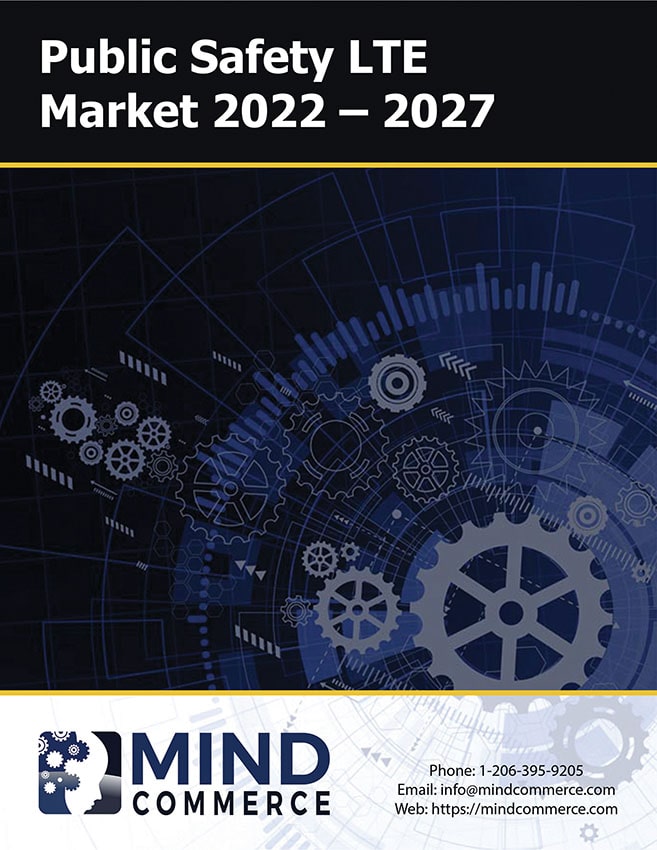Description
Considered the new de-facto standard for public safety broadband communications, LTE is rapidly gaining momentum within the public safety industry as a viable alternative to the decades-long use of non-cellular technologies such as Land Mobile Radio (LMR). While leading public safety communications vendors such as Motorola Solutions, Inc. continue to support LMR, the public safety LTE market is increasingly gaining momentum through the efforts of leading technology suppliers and communications service providers.
Evolution from LMR to the Public Safety LTE Market
Public safety organizations are largely using Land Mobile Radio (LMR) systems for mobile communications. While LMR is a proven mission-critical instant voice solution, it has the shortcomings of limited coverage, very low data capacity, inadequate interoperability, and very high operational costs. In today’s LMR networks, mobility and roaming between networks is very limited for a variety of reasons, including the lack of a common technology among the organizations assisting in the response, even when they are located in neighboring entities.
It is because of the aforementioned reasons and several others that LMR is being replaced by next generation systems such as those enabled via the Long Term Evolution (LTE) cellular communications standard. It is important to note that LMR will not simply go away as next generation public safety communications via LTE is deployed. In fact, public safety LTE will initially need to interoperate with existing LMR deployments. There will be a need to support both voice and mission critical data services as narrow-band LMR continues to play a critical role in for providing features such as extensive coverage, talk groups for voice, sub second PTT response times and direct mode communication between user terminals.
Deployment of a public safety LTE networks for will offer much more than voice and basic data communication applications. There is a growing demand for non-voice oriented services, which will be facilitated via LTE, 5G, and beyond. LTE opens opportunities for a wide array of public safety wireless applications such as bi-directional vehicular and mobile video, location services, multimedia command and control, dynamic mapping, and content-rich queries to complex databases.
These types of capabilities will present a substantial improvement over the current LMR networks, designed primarily for voice communications, which can’t meet today’s need for high-speed mobile data services. For instance, a police database query will no longer deliver a plain text paragraph. Instead, these queries can be enhanced to deliver rich, user friendly information containing video clips and high-resolution imagery. Furthermore, public safety LTE provides high data rates and low latency that will ensure data arrives in time for such mission critical environments. For example, public safety personnel will be able to access video associated with an incident scene in progress and improve response through dynamic localization, mapping, weather, and traffic flow applications.
One of the important differentiators for public safety LTE over LMR is Discovery, Proximity Services (ProSe), and Direct Communications.
LTE will operate in a peer-to-peer mode known as LTE Direct (LTE-D) that involves discovery and a mode of operation involving the so-called “ambient awareness”. This is expected to be a novelty (for non-emergency consumer applications) at first but quickly evolve into a new ecosystem that is at once complementary and competitive to the current cellular ecosystem.
Instead of transmitting messages to a macro network and then having messages sent back to devices through the mobile network, LTE-D provides for the ability of device-to-device (D2D) communications. LTE Direct can also mean an LTE broadcast where a one-to-many message can be sent directly to LTE capable devices without the use of the larger macro network.
Dedicated Networks for the Public Safety LTE Market
Enabled by the Middle Class Tax Relief and Job Creation Act of 2012, along with the allotment of $7 billion and 20 MHz of the 700 MHz D-Block spectrum, the First Responder Network Authority (FirstNet), implementation began in May of 2013. In March 2017, FirstNet formed a public-private partnership with AT&T, awarding AT&T a 25-year contract to build out the network.
In addition to all 50 states, 5 territories and the District of Columbia opted in to use FirstNet network within the United States, the solution is gaining momentum at the US federal level. For example, AT&T recently announced that the Navy and the Marine Corps had signed up to the FirstNet public safety broadband network. AT&T also recently announced that the U.S. Department of Justice selected it to modernize communications across the 40-plus federal agencies in the department in a deal worth $984 million over 15 years. Overall, they claim 7,000 agencies are participating in FirstNet, subscribing to more than 600,000 connections.
It is important to note that FirstNet is not the only public safety network. For example, the Verizon Responder Private Core for public safety LTE, which uses utilizes spectrum in various bands including the 700 MHz, 800 MHz Cellular, 1.9 GHz PCS, and 1.7/2.1 GHz AWS bands. The Verizon solution separates public safety data communications from commercial and consumer traffic, and is available at no additional cost to first responders and all qualified public safety personnel. Interoperability between AT&T and Verizon public safety networks remains an issue of discussion within the ecosystem.
Public Safety LTE Market Report
This report provides analysis of the global public safety LTE industry including assessment of the technology, market size, and key trends within the public safety LTE industry. The report includes public safety LTE market sizing and analysis from 2022 through 2027. All direct purchases of Mind Commerce reports includes time with an expert analyst who will help you link key findings in the report to the business issues you’re addressing. This needs to be used within three months of purchasing the report.
Related to Public Safety LTE is the Mission Critical Communications Market





